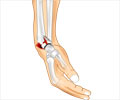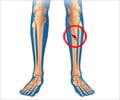Understanding of fracture risk in diabetes and identifying future areas of research will help better target patients in need of fracture prevention.

‘Understanding of fracture risk in diabetes and identifying future areas of research will help better target patients in need of fracture prevention.’





This is because determining the individual fracture risk of a
patient with diabetes is challenging for the physician as current
fracture predictors - namely, bone mineral density (BMD) and fracture
risk assessment tools, underestimate fracture risk in these patients. A new review in the journal Calcified Tissue International & Musculoskeletal Research looks at the complexity of fracture epidemiology in diabetes, and makes recommendations for the clinician and for future research. It addresses a major difficulty: the tight connection between the disease itself and diabetes-related complications, comorbidities and shared risk factors.
'Epidemiology of Fractures in Diabetes' examines current data on the various risk factors which influence fracture risk in diabetes, such as age, gender, previous fracture, glucocorticoid-use, smoking and alcohol use, as well as the potential role of falls, pancreatitis and autoimmune diseases.
The authors identify areas in which further research is needed, particularly emphasizing the need for epidemiological studies to disentangle the effects of shared risk factors for diabetes and fracture, such as pancreatitis and oral glucocorticoid-use. Furthermore, more research is needed on the effect of falls and hypoglycemia on the risk of fractures in patients with diabetes.
The review urges that physicians be cognizant of the fact that current risk factor calculators may not adequately predict fractures in people with diabetes, and that extra vigilance is therefore required. Imaging of the spine by vertebral fracture assessment or spine X-ray may help identify vertebral fractures and predict new fractures.
Advertisement
Professor Bo Abrahamsen, Dept. of Medicine, Holbaek Hospital, Holbaek, Denmark, stated, "Given that the global burden of both diabetes (currently 400 million people) and osteoporosis (currently 250 million) is expected to increase dramatically in the coming years, it is important that effective screening and prevention strategies are developed to reduce the risk of potentially devastating fractures in people with diabetes."
Advertisement















